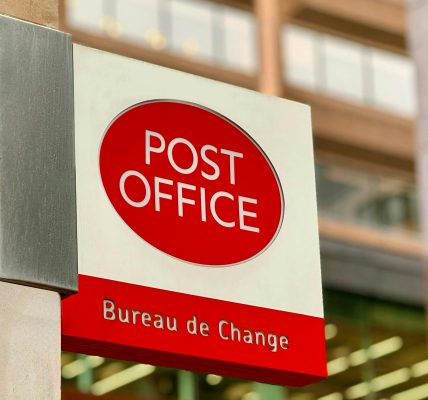Explainer
The accountancy firm Grant Thornton (GT) has published a public interest report into the governance failures at Woking Council which allowed the former CEO Ray Morgan, to run up debts in excess of £1.2bn through reckless lending.
The report highlights there were numerous occasions when the application of checks and balances could have raised red flags as to whether the council’s borrowing and investments were prudent, writes Tim Ames.
In the first instance, what did Woking council do?
The council obtained funds from the Public Works Loan Board Lending Facility (PWLB LF) and lent the monies to firms in the community to stimulate economic growth through targeted investment, a concept known as ‘placemaking’. The council extended loans using PWLB funds through 24 companies and joint ventures. Two substantive investments were the Victoria Square development and the redevelopment of the Sheerwater estate.
The council was working for the betterment of the local community. What went wrong?
In the case of Victoria Square (a hotel, retail and housing project), Grenfell Tower and inflation. The council borrowed £450m in 2016 but costs increased due to changes in cladding requirements after the Grenfell Tower fire. By 2022, borrowing was over £700m against assets of £205m.
Surely cost over runs are inevitable as some costs can’t be anticipated?
To a degree but in this case the Covid 19 pandemic of 2020. The GT report argues inflation and higher interest rates “amplified the financial impact of the potential weaknesses in the original business cases”. As the council had material investments such as Victoria Square were susceptible to downturns in consumer spending caused by the pandemic and increases in interest rates. An awareness of market and interest rates risks by Morgan and others may have precipitated earlier corrective actions to prevent loans from becoming impaired.
Why was Woking council allowed to borrow funds unchecked from PWLB?
Central government set no limits on the amounts councils could borrow. The PWLB was a non-discretionary lender which relied on councils to ensure they used public funds effectively. In reality, Woking council had no coherent investment strategy as Morgan made “piecemeal and opportunistic” investments.
Were there any governance controls at Woking council to prevent bad investments?
Morgan was the “principal architect” for investment decisions but as he held the post of CFO (also known as section 151), this diluted the challenge which could have been made by a different post holder. While the dual holding of CEO and CFO roles wasn’t unlawful, it wasn’t best practice.
Were there others who could have questioned the council’s investment strategy?
The council leadership from 1990 to 2021 was relatively unchanged. For example, former monitoring officer Peter Wright held several leadership positions during his 30 year tenure and had little professional experience outside of local government. This also applied to Douglas Spins who was Deputy CEO until 2021. The leadership clique was unlikely to ask difficult questions or expose any failings they were responsible for.

Building debts: Ray Morgan (left), Communities Minister Andrew Stunell MP (centre) and councillor John Kingsbury – Credit: Ministry of Housing, Communities & Local Government
Wasn’t Ray Morgan lauded by the council?
Indeed. Morgan was regarded as a “visionary” by many and the Conservative party leadership, John Kingsbury and David Bittleston, endorsed Morgan’s investment strategy. However, the council’s level of borrowing was so disproportionate to its income and size it should have been questioned more thoroughly.
The Victoria Square and Shearwater projects were agreed by the council so why is Morgan blamed?
These were but the GT report argues many other investment decisions rested solely with Morgan. He made speculative investments from an opportunities fund of £3m but as many purchases were made without independent valuations which failed to ensure the council obtained best value. One example of egregious lending was to Greenfield private school. Although the council had originally a secured £6m loan on the school’s property, it lent the school a further £7.5m which was unsecured. The lending of money without collateral or a guarantee was reckless.
What was the quality of the financial performance of the investment companies?
The auditors were unable to form a conclusive opinion because they could not differentiate between capital and revenue expenditure, which was attributed to the council’s poor recordkeeping for the investment companies. Since many of the companies failed to generate a profit, the council was effectively supporting unprofitable ventures. The report suggests key performance indicators (KPIs) traditionally used for investment decisions, e.g. return on investment (ROI) weren’t produced or monitored.
Did the investment companies have any checks in place to prevent bad loans?
No. As Morgan held directorships in the investment firms to which the council lent money, a conflict of interest arose. Even when different individuals occupied the relevant positions, Morgan purchased land through Thameswey Group without the knowledge or approval of the group’s CFO.
Were conflicts of interest declared before company meetings commenced?
Although council officers declared that they were representing both the council and the company’s interests, it was ambiguous in which capacity they were attending and whose interests they were truly representing. This was unethical.
Were there any repercussions?
Yes. The monitoring officer (unnamed in the report), was also a director of Kingfield Community Sports Centre (KCSC) Ltd. The council offered KCSC a £250 million loan facility despite having only £100 in capital and Woking council as landlord. Effectively, KCSC had negligible assets to secure loans against, yet the council proceeded with the loan.
Was there any oversight of the council’s investments?
Management information was often incomplete, unwieldy, or presented immediately before council meetings, which hindered proper evaluation by councillors. Many stakeholders mistakenly assumed that the assets would appreciate in value, despite the lack of independent valuations.
Did the council engage any specialists to help manage the loan book?
The council failed to employ any “experienced treasury or programme managers” commensurate with the size of the investment portfolio, so any crucial insight or advice was absent.
Was there oversight from PWLB LF?
Proper accounting by the council could have exposed the poor loan decisions. The council should have charged an annual cost of the repayment of debt each year to the general fund but failed to do so. This may have flagged that council borrowing was unsustainable.
Did Morgan welcome any challenge to ensure his investment decisions were robust?
No. The report states: “the former CEO did not welcome challenge of his decisions by other stakeholders and dissenting officers. Members were either persuaded to go along with his decisions or were marginalised.” It is intimated that the council culture wasn’t open or transparent. This isn’t ideal for good decision making.
Was there adequate management information over borrowings?
Councillors were given the ‘Green Book’, a monthly financial report but it lacked detail, e.g. while the income from investment properties was published, costs were excluded rendering it incomplete.
What was the quality of the council’s risk management framework?
The report suggests it was weak as the risk register did not include detail on investment risks. This deceased the ability of councillors to question the quality and appropriateness of investments.
Did internal audit raise any red flags in connection with the investment process?
No. Internal audit reviews were narrow in scope and the investment portfolio wasn’t considered. This was a shortcoming.
Did any external parties evaluate the quality of the loan book?
The Local Government Association reviews in 2015 and 2019 supported the council’s borrowing, calling it a “brave entrepreneurial approach,” and said the CFO had “a good understanding of risk” which was clearly wrong.
Photo credit: Chris Evans/Flickr

